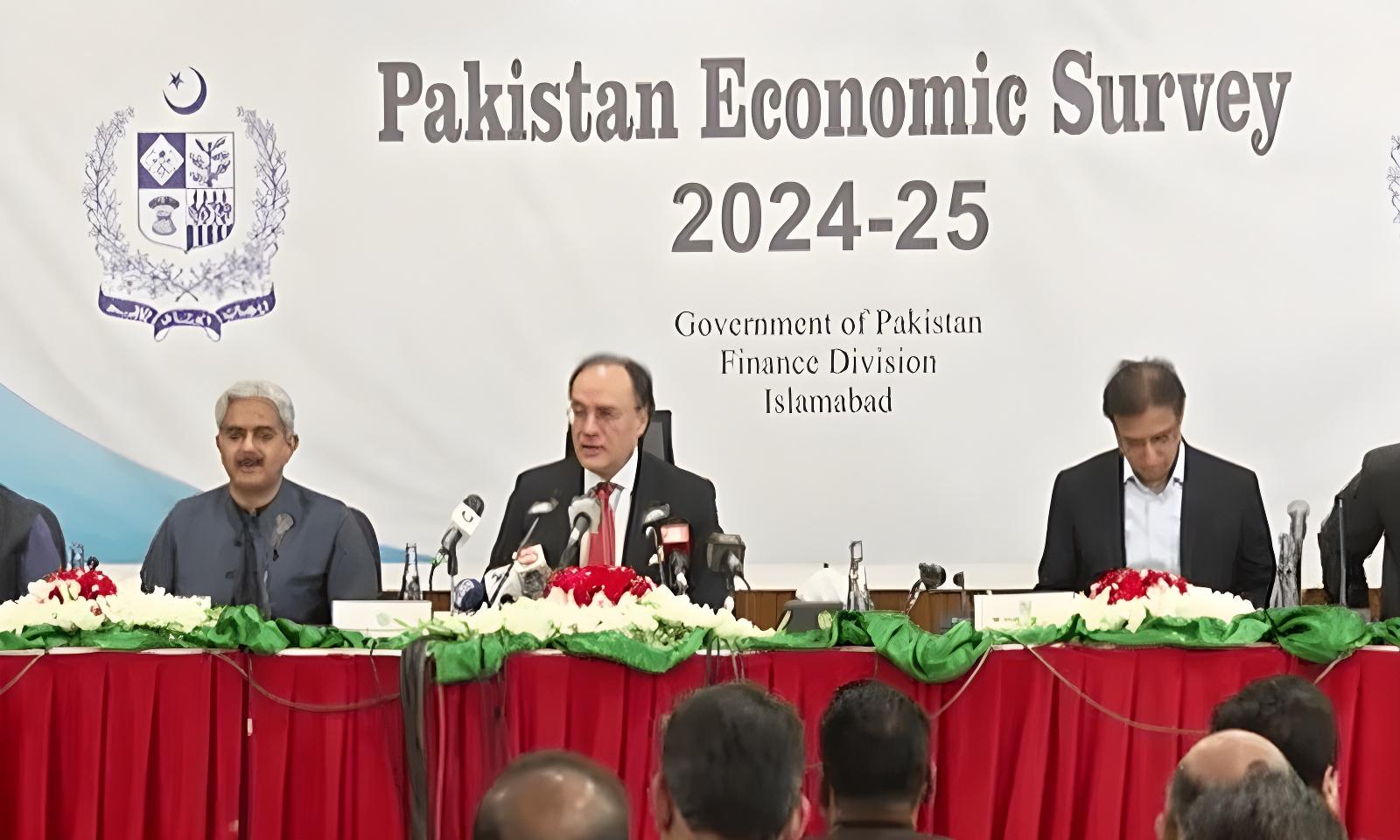Economic Survey 2024-25: Govt Misses Growth Target Amid Remittance Surge, Tame Inflation FinMin says number of tax filers doubled in outgoing fiscal year, economy acknowledged globally for achieving stabilisation
ISLAMABAD: Federal Finance Minister Muhammad Aurangzeb, while presenting the Pakistan Economic Survey 2024-25, revealed that the country’s GDP grew by 2.7% with inflation at 4.6% in the outgoing fiscal year.
The initial growth target was 3.6%, which was later revised down to 2.7%. The IMF also projects 2.6% growth this fiscal year and 3.6% next.
The survey, released a day ahead of the federal budget, outlines socio-economic performance, including GDP, tax revenue, inflation, employment, and climate impact.
Aurangzeb highlighted key achievements: the policy rate reduced from 22% to 11%, a 7% rise in exports, and $400 million earned by freelancers. IT exports hit $2.8 billion. With an 11.7% increase in imports, the current account recorded a surplus of $1.9 billion, and revenue collection rose by 26%.
Remittances increased by $10 billion over two years. The number of tax filers also doubled. Pakistan showed recovery compared to global GDP trends, with forex reserves rising and inflation easing.
Aurangzeb said Pakistan is on a better economic path with medium-term GDP growth projected at 5.7%. Commending the caretaker government for steering reforms under the IMF programme, he stressed the need to change the “DNA” of the economy.
He cautioned against rapid consumption-led growth that previously caused balance of payments issues. Growth was slowed by large-scale manufacturing and crop declines. Agriculture posted only 0.6% growth—its lowest in nine years—due to adverse weather.
Topline Securities noted that the 2.7% growth is below Pakistan’s long-term average of 4.7%, and may be revised down.
Total revenue for the first three quarters reached Rs13.37 trillion, up 36.7%. The current account showed a $1.9 billion surplus versus a $200 million deficit a year earlier.
The central bank cut the policy rate by over 1,000 basis points to 11%, aiming to support economic recovery. Inflation for the year stood at 4.6%. However, the economy remains fragile under the ongoing $7 billion IMF programme.
Key Highlights from the Economic Survey
Revenue: Total revenues rose by 36.7% to Rs13.37 trillion (Jul–Mar FY25), with tax revenue at Rs9.3 trillion and non-tax revenue at Rs4.23 trillion.
Remittances: $31.2 billion received between July 2024–April 2025, a 31% increase from the same period last year.
Inflation: Averaged 4.7%, with April inflation at a record low of 0.3%.
Agriculture: Sector grew 0.56%. Major crops declined 13.49%, cotton ginning dropped 19.03%, while livestock and other crops performed well.
Industry: Grew by 4.77%. Large-scale manufacturing contracted by 1.53%; electricity and water supply grew by 28.88%; construction rose 6.61%.
Services: Expanded by 2.91%. Notable growth in government services (9.92%) and finance (3.22%).
External Sector: Exports increased 6.4% to $26.9B; imports rose 7.5% to $48.3B. Trade deficit at $21.3B; current account surplus of $1.9B.
Social Protection: Rs471B allocated to BISP. Kafaalat reached 8.5M families; Rs55.4B disbursed for child education; Rs5.48B for maternal and child health.
Education: 0.8% of GDP spent; literacy rate at 60.6% (male: 68%, female: 52.8%). 269 universities in total.
Manufacturing & Mining: Overall manufacturing grew 1.3%. LSM declined 1.5%, SSM and slaughtering rose 8.8% and 6.3%. Mining sector shrank 3.4%.
Fiscal Development: Fiscal deficit reduced to 2.6% of GDP. Primary surplus improved to Rs3.47 trillion. Provincial surplus rose to Rs1.05 trillion.

